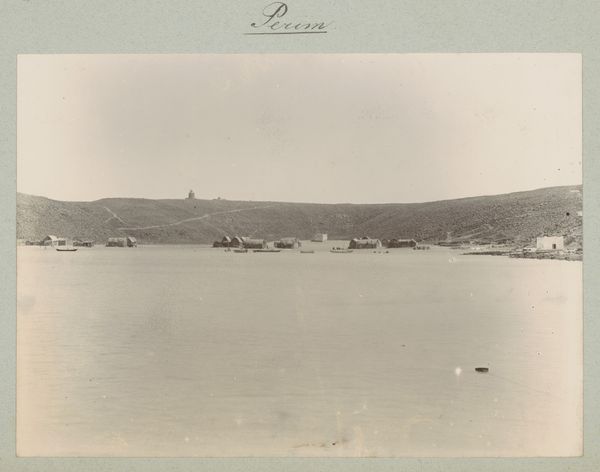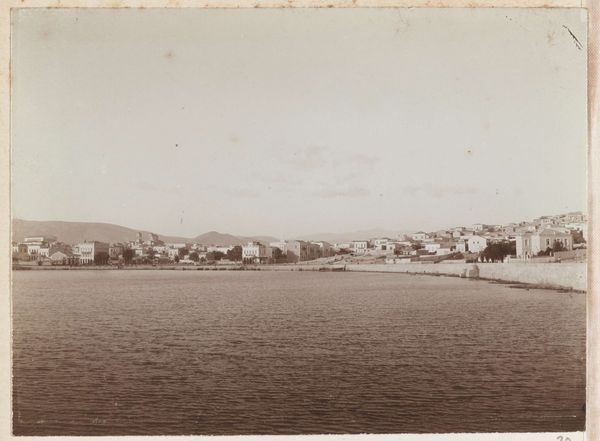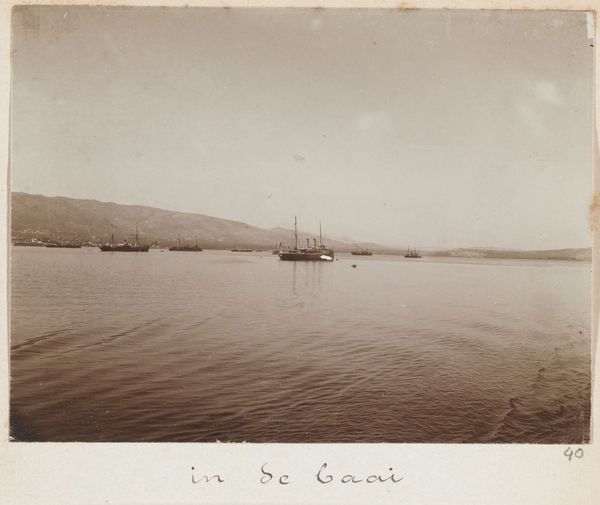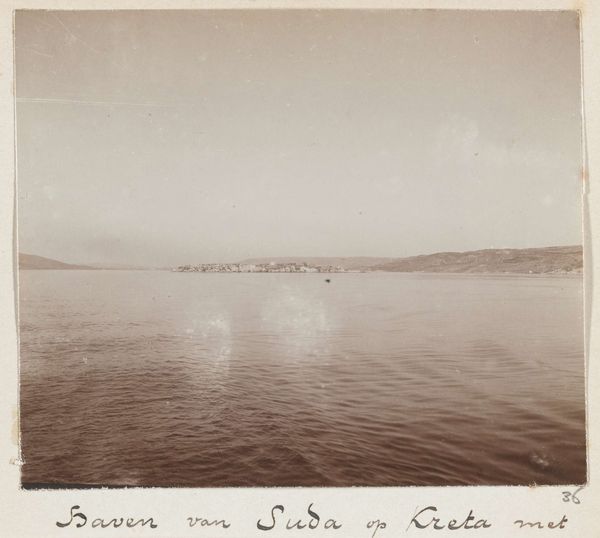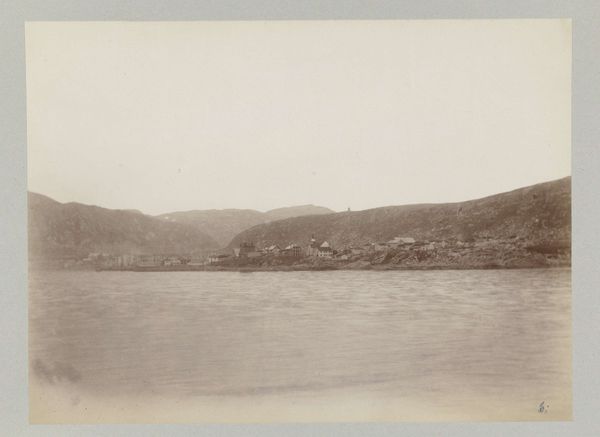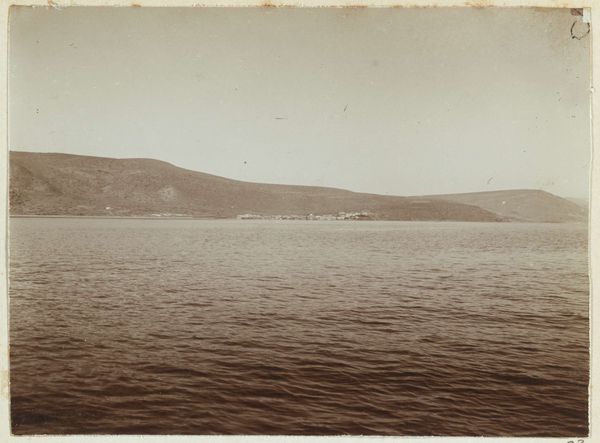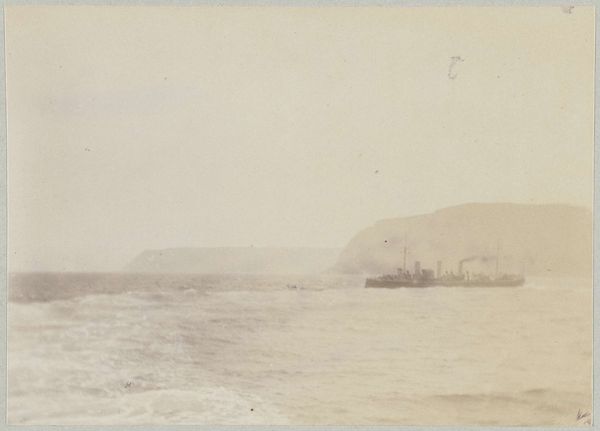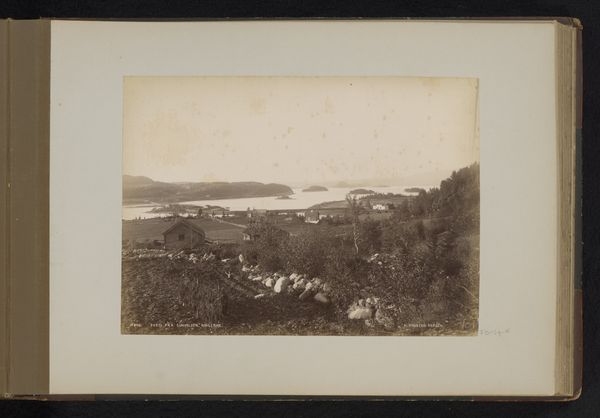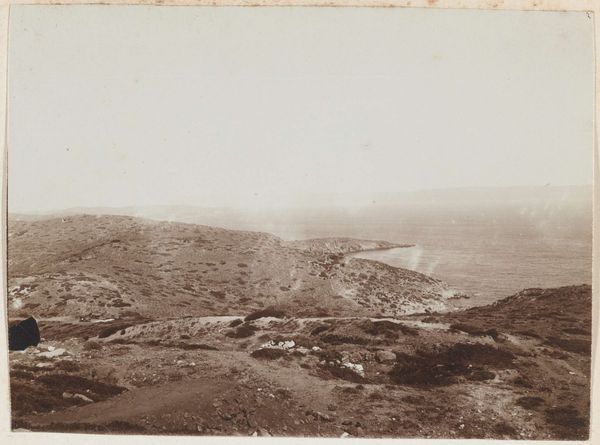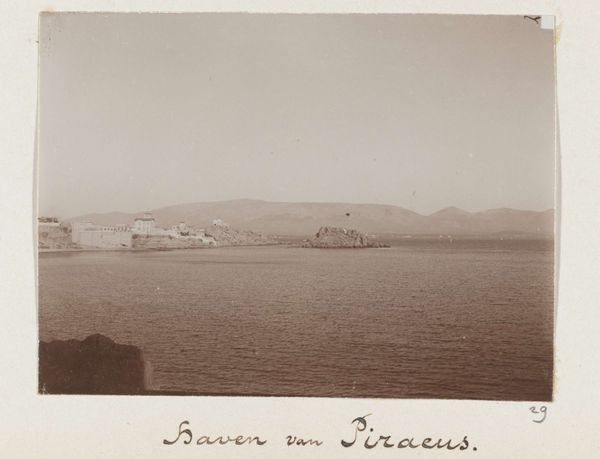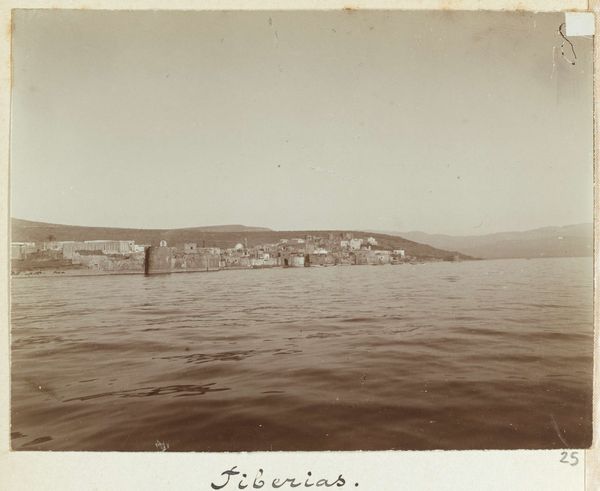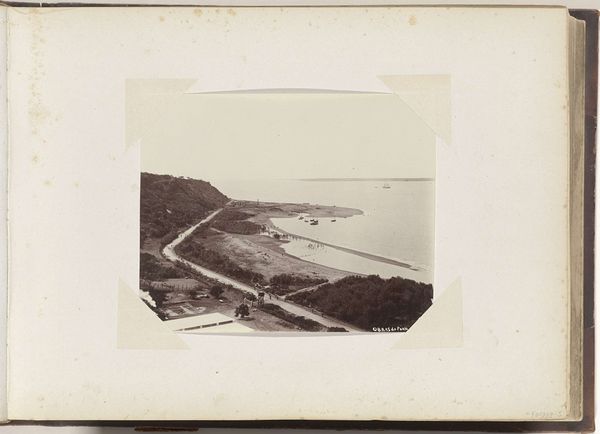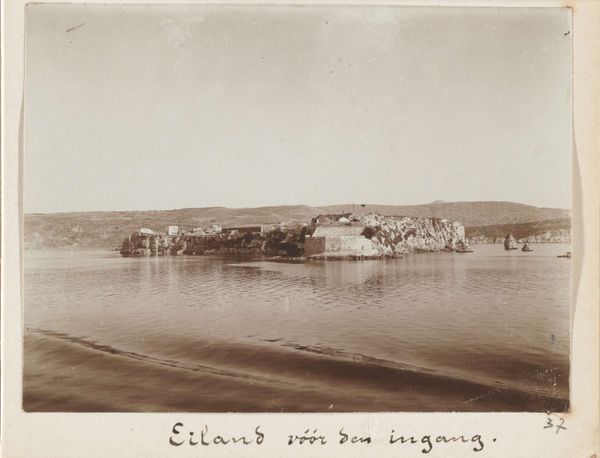
print, photography
# print
#
landscape
#
photography
#
cityscape
#
watercolor
Dimensions: height 80 mm, width 103 mm
Copyright: Rijks Museum: Open Domain
Curator: Here we have "Haven van Piraeus," a photograph dating back to 1898, captured by Johannes Lodewijk Heldring. It presents a tranquil view of the port city. Editor: It’s instantly striking. The muted tones create a somber, almost melancholic atmosphere. It feels like looking at a world suspended in time, doesn't it? Curator: Absolutely. It's important to remember that Piraeus was already a major port, a gateway, experiencing rapid change at the end of the 19th century. Heldring is showing us more than just the harbor itself. Editor: How do you see it reflecting that transformation, though? To me, the sepia tones, the hazy quality… It all seems to evoke a feeling of distance. Is it glorifying the industrial landscape, or subtly critiquing it by emphasizing the stillness and scale of everything? Curator: Well, the stillness could speak to the limitations of photographic technology at the time, demanding longer exposures. It’s less a choice and more a technical necessity influencing the visual language. Also the image avoids focusing on individuals, drawing our attention to the architecture. What does this tell us? Editor: True, the absence of bustling figures is striking. The photograph gives way to structures that benefit from a booming naval trade. It feels very curated. We also must question his position, the high angle, the position of ships, to not show us poverty that surrounds the port city. Curator: Precisely! He is not an impartial observer, even with photography which often carries claims to pure objectivity. Heldring had the freedom to select this particular viewpoint and exclude aspects of everyday life. What is displayed reinforces notions about power and industry, or beauty standards around naval trade at the time. Editor: So it really serves as a time capsule, not only documenting the physical landscape, but also a historical vision about society itself. In all its problematic complexity. Curator: Exactly, reminding us how the lens, even back then, mediated reality. Editor: It definitely makes you think about whose stories are seen, heard, remembered in this landscape! Curator: A fruitful starting point to understanding the complex relationship between artistic production and societal power dynamics at play then, isn't it? Editor: It does provide rich texture in what Heldring wanted to highlight during this period. A view on commerce, industry, or the beauty within the landscape? I love all of it.
Comments
No comments
Be the first to comment and join the conversation on the ultimate creative platform.
